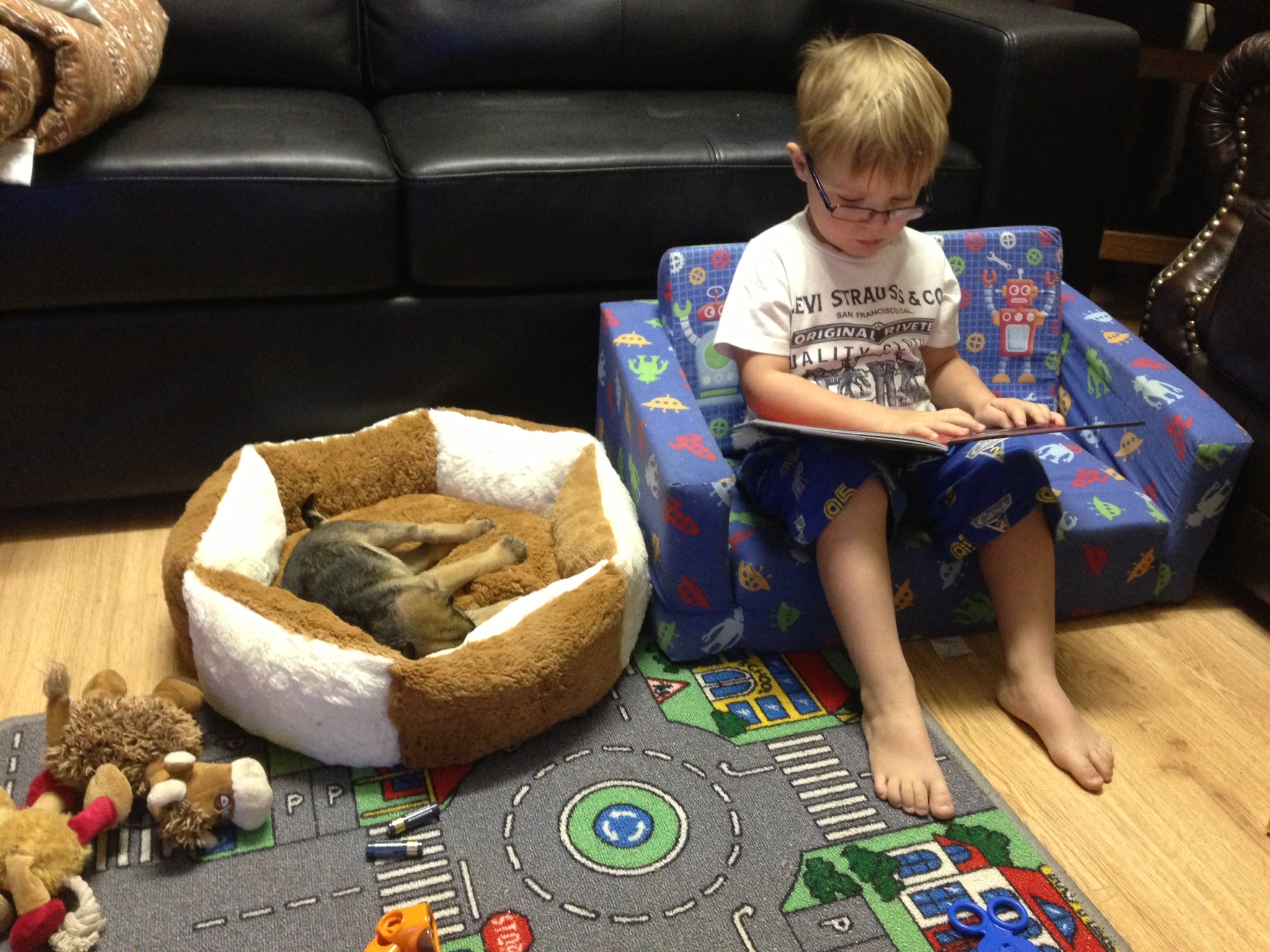Teach Your Dog How To Love Your Baby
This article is designed to help you establish a strong and lasting relationship between the baby and the dog – a relationship that will last a lifetime. These steps are relevant to after you have already brought the baby home and the dog was introduced to the baby.
The trick is to make an association in the mind of the dog between the baby and good things that can happen. You are normally tempted to pet the dog a lot when the baby is asleep while pushing the pet away when the baby is awake. That is understandable but the opposite is actually a lot better.

Offering Treats At The Right Time
You want to teach the dog that when he/she is around the baby, good things happen: petting, playing, treats and so on. Feed the dog when you feed the baby and when you walk the dog, if possible, take the baby with you. When you apply this strategy, the dog basically starts to love it when the baby is active and awake.
The problem is that such multi-tasking is quite difficult. It is a lot easier when there are two adults that live in the same home. If that is not the case, you can still do a lot by simply holding the baby and talking to the dog, stroking him, offering treats and tossing balls.
Sometimes Ignoring The Dog Is Better
When the baby is not around, use some reversed psychology. Try to ignore the dog when that is the case and eventually the pet will start to eagerly appreciate the time when the baby is active.
You Need Some Quiet Time
Having a baby is time consuming and there are moments in which you want to make sure that you can tend to the child’s needs without being bothered by the dog. Have designer dog beds in the same room where you will feed your baby. Whenever it is time to give the baby a bottle, offer a treat to your dog and more rewards should be given when the dog just stays on the bed. Once every few minutes, throw a small treat so that the association between baby feeding time and treats on the bed is established.
Dealing With Baby Sounds
In most cases the dog will ignore the loud baby signs but there are circumstances in which the pet needs some help in order to get to that level. If you see that the dog is distressed when loud baby noises are heard, try to associate them with something that the dog loves. Once again, the treats work! When the baby cries or squeals, throw a treat! The dog will thus realize that the loud baby noises are not a signal that something is wrong.
Babies Grow Up
Even if the dog ends up loving the baby because of the perception that good things happen when the child is around, as the baby grows, things do change. He/she will start grabbing, poking and sometimes bother the dog. In order to establish a very good relationship between the two, you need to also continue paying attention to what happens as the baby becomes a toddler.
This is a sponsored guest post.


 Dog bites are a lot more complex than simple ‘breed’. Families with children and dogs need to recognise that any child-dog interaction can end up in a bite, regardless of breed. However, there are a number of ways that dog bite risk can be minimised.
Dog bites are a lot more complex than simple ‘breed’. Families with children and dogs need to recognise that any child-dog interaction can end up in a bite, regardless of breed. However, there are a number of ways that dog bite risk can be minimised.